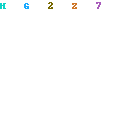Journalism 101. Who, what, when, where, why, how?... these key dimensions that are the  foundation of journalism can also be used to design great marketing & segmentation strategies, and to turbo-charge your innovation efforts.
foundation of journalism can also be used to design great marketing & segmentation strategies, and to turbo-charge your innovation efforts.
The 5 W's as they have been dubbed, can serve as a powerful tool for gaining deep insight into the contextual nature surrounding the need for and use of your product. I like to think of the 5W's as the marketing equivalent of an industrial-grade power shovel, allowing you to "dig deep" so you can get to those precious consumer gems that lay beneath your feet.
Context is king
Powering the 5W's is the essential notion that everything that we do is embedded in a context, and the better you, the marketer, understand the different contexts in which the need for/use of your product occurs, the better equipped you will be to develop marketing strategies or innovations that truly pop!
How do I use the 5 W's?
The simplest way to begin using the 5W's is to start with the most basic question and loop it through each W:
- {When/Where/Why/How/For whom} might the need for my product arise?
As you begin to use the 5W's, one thing that will become clear to you is that one or two of the Ws will often be more relevant to your product than others. You'll also notice that the Ws will frequently interact with each other in meaningful ways, and that you'll often want to drill down on a given insight using "follow-up" Ws. Note these interactions and drill-downs and allow them to generate further insight into the contextual nature of demand for your product. Often the deepest insights lay in these pockets.
Gatorade: a brief example of the 5 W's in action

Let's take Gatorade, that cold, refreshing beverage that most of us have purchased at some point in our lives. Reaching into our magic hat of W's, we come up with "Where?", leading us to ask, "Where might the need for Gatorade arise?"
Given that Gatorade is 'the ultimate thirst quencher', I begin to think of places where the need for thirst-quenching is likely to arise. A few examples that come to mind include basketball courts, hot climates (e.g., Phoenix, The Mojave Desert), marathons, and the Dead Sea.
Let's reach into the hat again... this time I pull out "When?", leading us to ask, "When might the need for Gatorade (thirst-quenching) arise?" Some initial thoughts that come to mind include summertime, playing sports, during a long hike, the morning following a night of drinking, a few hours after eating extremely salty food, and last but certainly not least, during a prolonged bout of diarrhea.
Let's now drill down on one of the "When's" - during a prolonged bout of diarrhea - and ask, "Where might such bouts occur?" One thought that comes to mind is certain poor villages around the globe where outbreaks occur regularly. Gatorade could be used in such places to quickly rehydrate people, especially children, who can die from the dehydration caused by the outbreak. Needless to say the potential benefits to Gatorade, the Gatorade brand, and the people of such villages would be numerous.
5 W's Recap
How to use the 5W's for developing marketing strategies & for business innovation likely merits an entire book; perhaps we'll put one together in the near future. Hopefully in this post I've given you a little taste of how one of the bedrocks of journalism can also serve as a potent tool for marketers & innovators alike. Much more to come.

More posts on the 5 W's:

